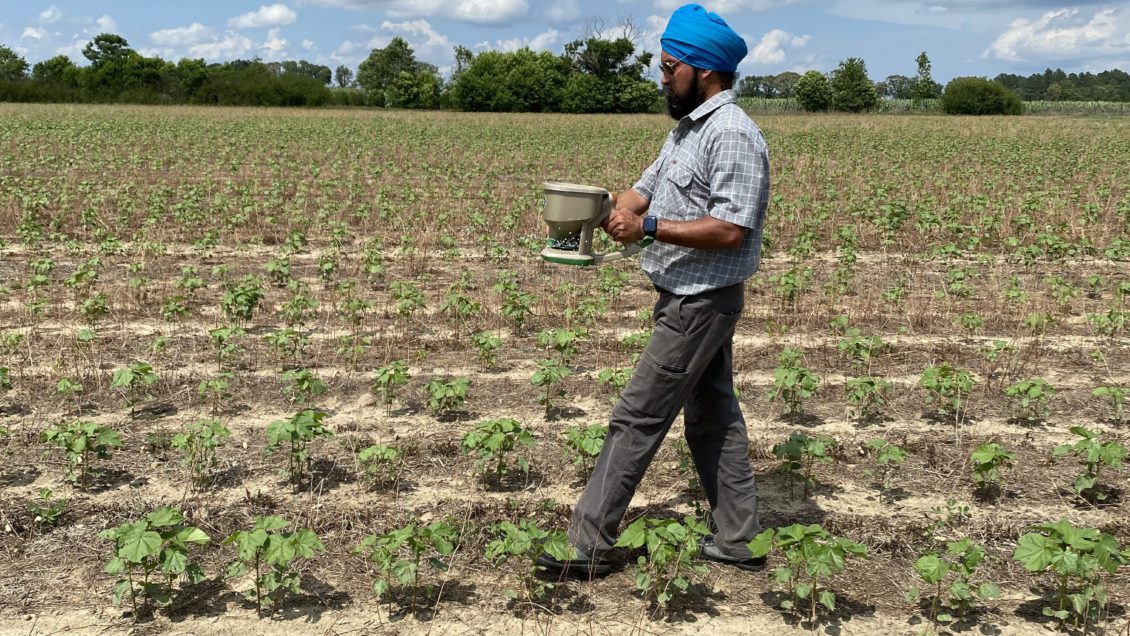
Fertilizers claim much of the input costs for growing crops and a Clemson University specialist says that, especially with today’s fertilizer prices, precise input management is important.
Bhupinder Farmaha, a nutrient management specialist housed at the Clemson Edisto Research and Education Center in Blackville, South Carolina, and Clemson Cooperative Extension Service agent, recently conducted a Zoom meeting to talk about crop fertilizer needs. Among row crops, corn demands the most in fertilizer costs.
“For corn, 37% of the input operating costs goes to fertilizer,” Farmaha said. “Because fertilizer prices are continually increasing, it is very important for growers to precisely manage fertilizer inputs.”
Several factors, including increased costs in nitrogen, phosphate and potash, have attributed to the climb in fertilizer prices. These prices have doubled since the end of 2020 when prices were about $400 per ton. Nitrogen recommendations for corn are based on yield goals. For phosphorus and potassium, farmers should account for sub-soil fertility by taking 6-inch to 12-inch samples.

“Right now, we are at more than $800 per ton,” Farmaha said. “Because fertilizer prices have doubled, managing inputs has become quite challenging. So, farmers should set realistic goals this year.”
Understanding the roles nutrients play in maximizing yields helps growers understand where they can cut and still profit. Soil tests and lime to adjust soil acidity levels are two items that should not be cut, Farmaha said. Soil tests can show growers the level of nutrients already in the soil, indicating where less fertilizer is needed. When the soil acidity level, or pH, is found to be less than required for a crop, a liming adjustment is recommended to bring the soil pH to the “Target pH.”
Calculators and web apps developed by the Clemson Extension Precision Agriculture team also can help growers make proper management decisions and develop prescription plans for their crops.
Information on collecting soil samples can be found at https://tinyurl.com/ClemsonSoilSamples.
Samples can be mailed directly to the Clemson Agricultural Service Laboratory. Guidelines for submitting samples can be found here: https://bit.ly/CU_SoilSampleSubmit, or by visiting the local Clemson Extension County Office. To order soil sample mailers or for more information, visit https://tinyurl.com/ClemsonAgLab.
Using cover crops and conservation tillage
In addition to fertilizers, cover crop rotations and conservation tillage also can help reduce input costs. Cover crops are planted between periods of cash crop production to help soils stay healthy and productive, and promote sustainable agriculture. In South Carolina, cover crops typically are planted from October to November through April to May. Determining which cover crop or cover crop mixture to grow depends on a farmer’s goals.
“Cover crops can be planted to improve soil health as well as provide insect and weed control and conserve moisture in the soil,” Farmaha said. “Before a cover crop is planted, farmers must decide what they want to achieve.”
Planting a mixture of multiple cover crops is more beneficial than single species but can substantially increase the cost of seed and chemicals to terminate them. Mulch from cover crops can help improve soil structure, promote water infiltration and limit pest and disease outbreaks. Cover crops also can be used in weed suppression.
Conservation tillage such as no-till, in-row subsoiling, strip-till and ridge-till also can reduce the need for costly chemicals. These tillage practices buildup crop residues on soil surfaces to minimize impacts of water and wind erosion. Properly managed crop residues protect soil resources, enhance soil quality, restore degraded ecosystems, improve nutrient cycling, increase water conservation and availability, enhance pest suppression, reduce runoff and leaching of nutrients off-site, and sustain and enhance crop productivity and profitability.
For more information on soil fertility visit https://www.clemson.edu/cafls/research/soilfertility/.
-END-
Get in touch and we will connect you with the author or another expert.
Or email us at news@clemson.edu
